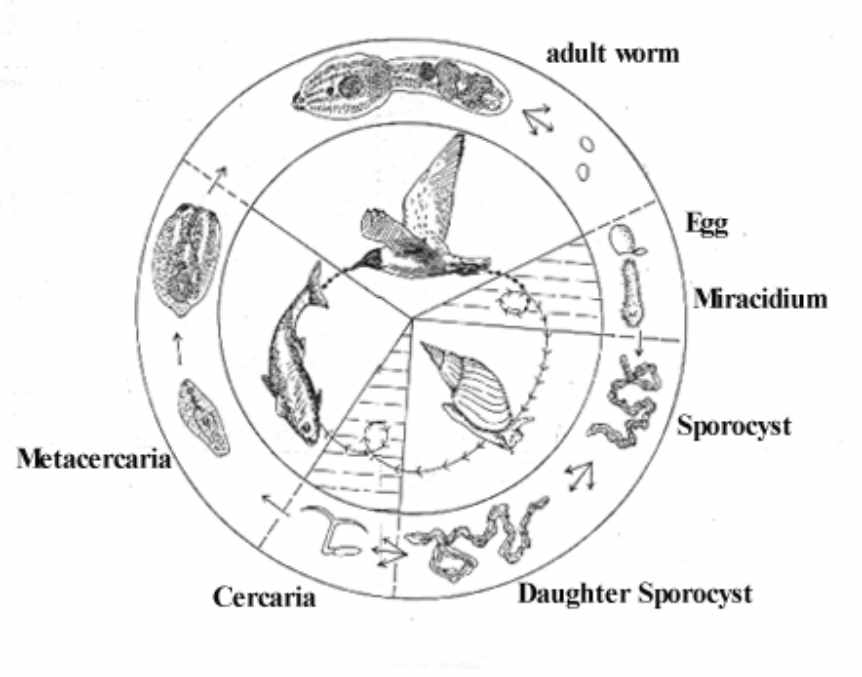
Lifecycle of D. pseudospathaceum (HAAS, unpubl.)

Lifecycle of D. pseudospathaceum (HAAS, unpubl.) |
Most fishes of the ponds around Erlangen contain larvae (diplostomula) of the trematode worm Diplostomum pseudospathaceum in the lenses of their eyes. The adult parasites live in the intestine of gulls and terns which have eaten the parasitized fishes. The Diplostomum eggs pass out with the bird's faeces and give rise to miracidium larvae, which penetrate lymnaeid snails. Sporocyst generations in the snails produce crowds of cercariae, which leave the snail and actively invade the fish intermediate hosts. They find their way along the fish blood vessels to the eyes. We obtain the parasites by collecting infected Lymnaea stagnalis snails in fish ponds and we once had established a laboratory life-cycle using domestic chickens as final hosts. We investigate, how the cercariae find, recognize and penetrate the fish hosts. They show very complex behavioral responses to chemical (carbon dioxide, specific fatty acids, macromolecular glycoconjugates, sialic acids), mechanical and visual host cues. In addition we investigate the mechanisms by which the parasites orientate through the fish tissues towards the eye lenses with various in vivo and in vitro methods.
|
Wilfried Haas, Cynthia Wulff, Petra Stiegeler, Bernadett Beran